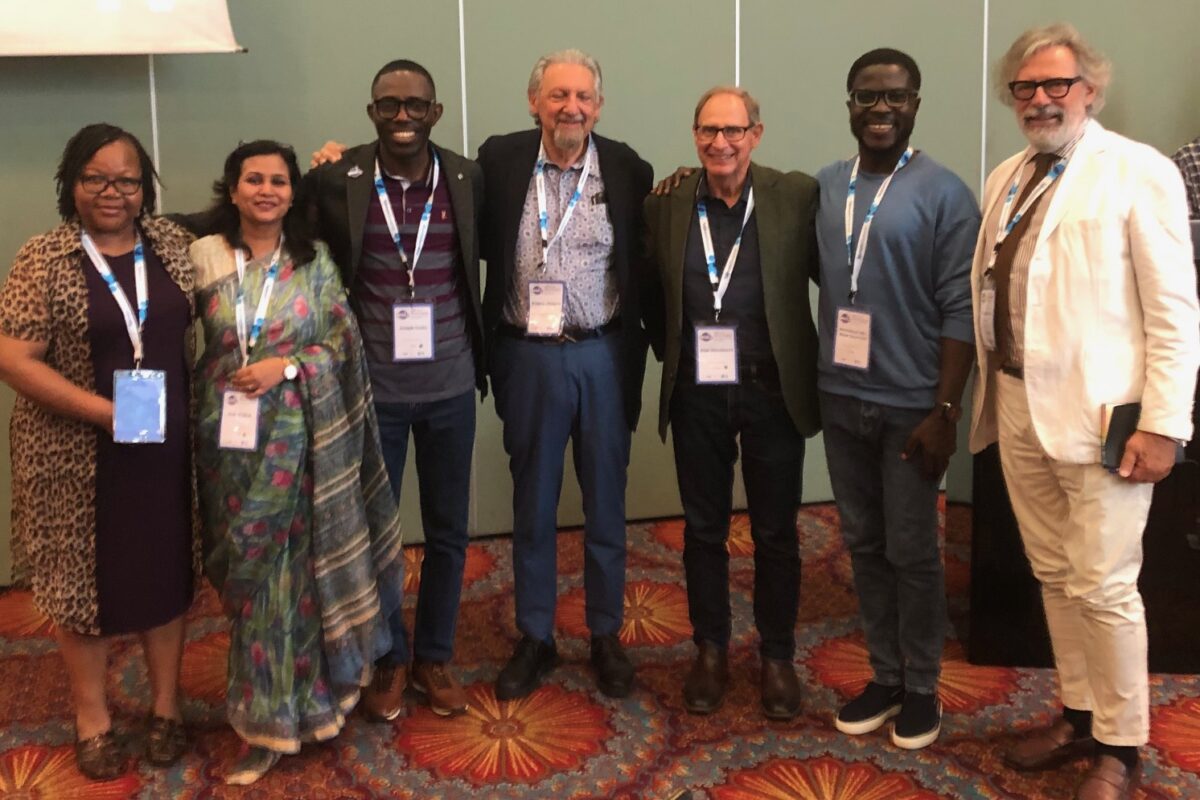Three Conferences and a Global Congress on Suicide Prevention – Reflections
February 2024
Last year, with the return of face-to-face gatherings after the COVID-19 pandemic restrictions, there was a lot to catch up on at suicide prevention conferences. Some things have been learnt from the pandemic responses. The world has changed in many ways in the past few years. Suicide prevention must meet many challenges. Here are my take aways from three conferences and a global congress.
Each gathering reminded me that we are living through difficult times and the prevention of suicide must be a priority for leaders, governments, and communities. The world has become a complicated and distressing place for so many people and this will predictably push some towards a suicidal crisis.
At Portland, USA, during the American Association of Suicidology conference, I saw the fractures in a city population drawn along racial, poverty and political lines. Tents occupied by homeless people lined the verges of the motorways and in the city parks. The city was still scarred from riots. I heard colleagues talk about the need for healing in local communities. This created a context for those working in suicide prevention that was not easy to navigate. At a conference with European crisis line colleagues in Lignano Sabbiadoro, Italy, I heard about the hardships associated with energy shortages in Europe and the underlying anxiety about the possibility of further escalation of nearby hostilities. During a conference in Canberra, Australia, the so-called ‘lucky country’, household mortgage stress, inequalities in income and the lingering impacts from climate-change related natural disasters on people and communities were being raised as concerns for those working in suicide prevention.
It seems that Durkheim, the 19th century sociologist who viewed suicide as a socially influenced phenomenon, had a point: suicide is related to social fabric and structures. Suicidal behaviour is more than a treatable mental condition. Psychosocial stressors and social factors affect the individual. The conference programs this year were full of perspectives on the interplay between personal and social factors in suicide prevention.
One lesson learned from the COVID-19 pandemic regarding suicide prevention is this: contextual factors must be addressed. A study on suicide prevention in Canada during the COVID pandemic by Roger McIntyre and others from the University of Toronto concluded as follows: “Our results suggest that government interventions that broadly aim to reduce measures of insecurity (i.e., economic, housing, health), and provide timely psychiatric services, should be prioritised as part of a national suicide reduction strategy, not only during but after termination of the COVID-19 pandemic.”
This outlook was on display at the global congress for the International Association for Suicide Prevention, held in Piran, Slovenia. The dominant theme at this meeting of 800 delegates from 80 countries was this: policy action, systematic reforms, national strategies, are the big-ticket items – the macro factors – for suicide prevention in today’s world. Whole of government, large scale public health mitigation of risk factors is needed for there to be meaningful reductions in suicides.
Presenters at the global congress reinforced this; Professor David McDaid spoke about the ways economic productivity and employment surrounds suicide and suicide prevention; Dr Stephen Stack demonstrated how social inequalities and social inclusiveness influence suicide rates. These factors require action to reduce their occurrence and mitigate their impact across whole groups of people.
It was also clear from the conference agendas that the social determinants surrounding mental illness must be addressed, alongside clinical treatments. Presentations showed that anxiety and depression increase proportionally in prevalence amongst those who face socio-economic disadvantage, those who have negative childhood experiences, those who are socially excluded. Sessions on loneliness, mental health and suicidal behaviour featured in the programs at each conference.
The conundrum seems to be, however, that while those working for suicide prevention understand the interplay across mental health, personal, family, social, and national factors, there is still a long way to go for governments and policy-makers to apply a broader lens to their understanding of suicide. There is still the idea that suicide will be prevented by increasing the numbers of mental health professionals for people to book appointments with, or by creating more effective treatments. Suicide prevention must address the ‘macro’ factors – those that impact on whole populations, and which are mostly in the hands of governments, community leaders and employers to address.
Crisis support services fit into this larger picture of suicide prevention. They address the impacts of the macro factors as they translate into people’s experiences of unemployment, financial insecurity, relationship breakdowns, illness and injury, addictions, violence, social exclusion, and discrimination. These are universally available services. They are not restricted to people who have a mental illness. They provide relief from distress and boost a person’s coping capabilities so they can get through the next challenge in their lives. They are attuned to the growing understanding throughout the world that suicide prevention must be concerned with the contextual and social factors in a person’s life.
A compelling example of this was a Befrienders Worldwide presentation about the operation of a crisis line for seafarers: a crisis support service for the thousands of people on ships at any point in time. Seafarers typically face stressful, difficult working conditions, struggles with continuing poverty, all while living in a confined environment with virtually no contact with loved ones and social support. No wonder callers to the seafarer crisis line are often feeling suicidal. Without the crisis line, they have virtually no one to turn to, nowhere to run, when feeling this way.
While decision-makers and policy advisors must work to address the macro factors for suicide prevention, they must also provide the strategic endorsement for and resources to crisis support services so the immediate needs of those who are in distress and facing difficulties each day are not overlooked. Crisis support services must reach out to those who experience intense emotions and distress during difficult times, because they can be vulnerable to suicide. The offer of immediate relief and support must be clear and available. This is a ‘micro’ aspect of suicide prevention, and it must sit alongside the macro, so we never lose sight of the individual in need. More than ever before, crisis support is a frontline, essential service for the prevention of suicide.

